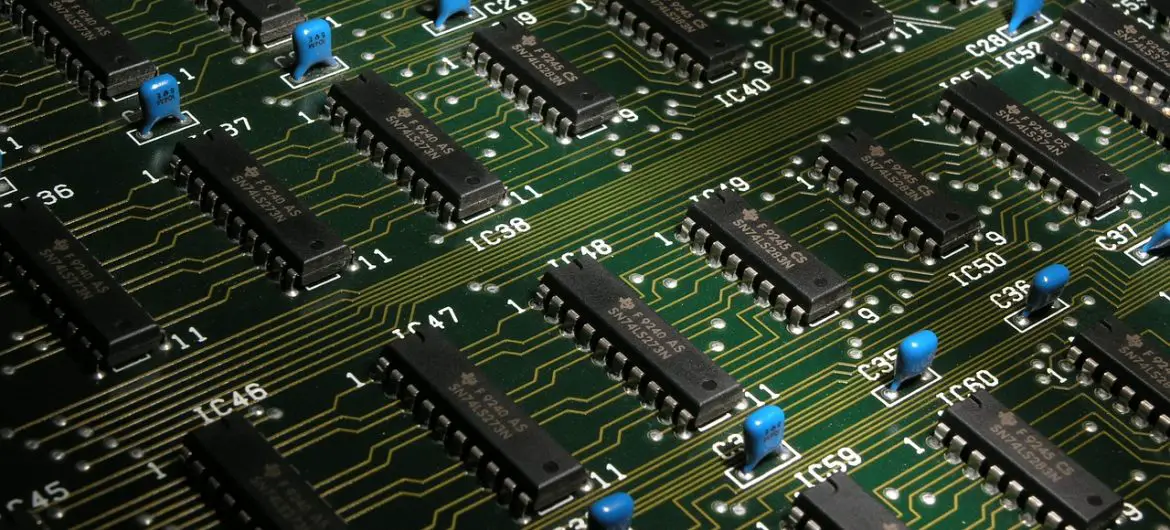A microcontroller is an amazing piece of technology with many capabilities.
But, can a microcontroller work independently? A microcontroller can work independently as part of a stand alone embedded system. It is a device that is capable of controlling, outputs, inputs, and external peripherals by itself without the assistance of another microcontroller or microprocessor.
Taking a closer look and understanding how a microcontroller works will give us a better understanding of how it can work independently.
Also defining what working independently means will help with our question which I will cover later.
A closer look at a Microcontroller
So what is a Micrcontroller?
A microcontroller is essentially a small computer embedded on a single metal-oxide-semiconductor integrated circuit chip.
Just like our brains are tasked with controlling everything we do, a microcontroller is the brain of an embedded system tasked with controlling everything it does.
But, a microcontroller can do more than just process information.
Just like we have eyes to help us see, a nose to help smell, legs to help us move around etc, microcontrollers have features also known as peripherals, that help them perform different tasks.
These peripherals include:
- Memory
- Timers
- Analog to Digital Converter
- Digital to Analog Converter
- Serial Communication
- General Input/Output pins
- Pulse Width Modulation
All these features are built in the microcontroller chip.
What does working independently for a microcontroller mean?
To understand the question of whether a microcontroller can work independently, we need to understand what an embedded system is.
A microcontroller is always part of an embedded system.
An embedded system is a combination of processors, communication and input/output peripherals.
The most common embedded system you will be familiar with is a computer.
It has inputs(mouse, keyboard), outputs (computer screen), and a processor (CPU).
Similarly, microcontrollers are part of an embedded system with inputs (sensors, buttons, switches) and outputs (motors, LEDs).
In this instance a microcontroller is working independently. It is in charge of processing, running and controlling information and input and outputs.
It is a stand alone embedded system.
Other instances you will have larger systems that are a collection of smaller embedded systems.
At the heart of these smaller systems are microcontrollers.
However, these microcontrollers are working together to achieve a specific goal, and each microcontroller is given a task to help achieve the end goal.
In this instance the microcontrollers are not working independently, as they rely on each other (there is some form of communication between microcontrollers).
Microcontroller vs Microprocessor
The microcontroller and the microprocessor get confused a lot . However, the two are quite different.
The main difference is that Microprocessors do not have in-built peripherals like memory, Analog to Digital Converter, Pulse Width Modulation etc.
Due to this a microprocessor relies on external peripherals to achieve specific tasks and cannot work independently.
When can a microcontroller work independently?
There are many applications where a microcontroller is part of a stand alone embedded system and has to work independently.
The less complex a system the easier it is for a microcontroller to work by itself. It can process and control all information.
There is no master processor, the sole microcontroller is the master itself.
Examples of stand alone embedded systems include:
- Toasters
- Microwaves
- Ovens
- Mp3 Players
- Digital Cameras
- Video Game Consoles
- Radio
These are just a few of the many examples of stand alone embedded systems where a microcontroller works independently.
When can a microcontroller not work independently?
There are embedded systems that consist of multiple subsystems and microcontrollers.
In these types of systems, operations are more complex and would be too much work for a single microcontroller to carry out independently.
So multiple microcontrollers are needed, each given a specific task.
There might even be a master microcontroller that is in charge of overseeing all operations and the other microcontrollers.
Whatever the end goal, it requires the microcontrollers to work and communicate together efficiently.
Common examples of embedded systems with multiple subsystems and microcontrollers are:
- Automobiles
- Weather Stations
- Home Security systems
- Mobile Phones
- Smart Home Systems
Why would a microcontroller work independently?
The reason a microcontroller might work independently is because the application it is used in is not very complex in nature and does not require a lot of processing.
It all depends on the application.
But, do not underestimate the capabilities of microcontrollers. They can achieve a lot even when they are working by themselves.
Final thoughts
Depending on the complexity of the embedded system, a microcontroller can work independently.
When there is a larger system consisting of multiple subsystems, microcontrollers do not work by themselves, but with a network of microcontrollers.
They communicate with each other and work together to complete a task.





